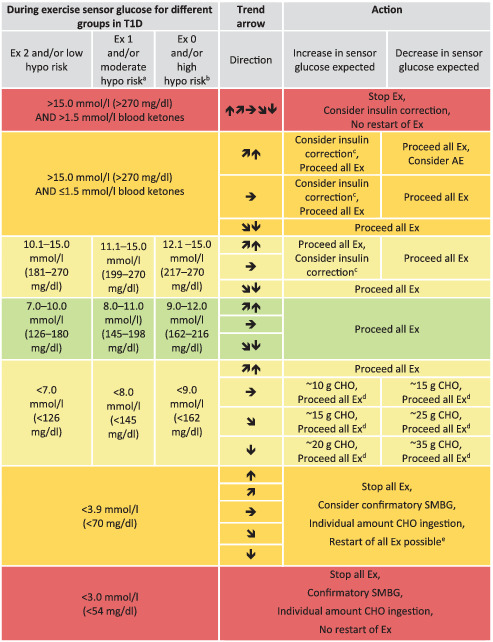TABLE 2.
Sensor glucose targets during exercise in regard to different groups of people with type 1 diabetes

|
Note: Sensor glucose targets are detailed for the following groups in type 1 diabetes (T1D): intensively exercising and/or low risk of hypoglycaemia (Ex 2); moderately exercising and/or moderate risk of hypoglycaemia (Ex 1); minimally exercising and/or high risk of hypoglycaemia (Ex 0).
When reaching the required sensor glucose level during exercise, only consume carbohydrates again when trend arrow is starting to decrease.
These recommendations are not applicable to hybrid closed‐loop systems.
Green shading, no/minimal action required; light‐yellow shading, minimal/moderate action required; dark‐yellow shading, moderate/intense action required; red shading, stop exercise.
AE, mild‐to‐moderate intensity aerobic exercise; CHO, carbohydrate; Ex, exercise; hypo, hypoglycaemia.
Recommendation for older adults with coexisting chronic illnesses and intact cognitive and functional status.
Recommendation for older adults with coexisting chronic illnesses or two or more instrumental ADL impairments or mild‐to‐moderate cognitive impairment.
50% of the regular insulin correction factor.
Check sensor glucose at least 30 min after carbohydrate consumption and repeat treatment if required.
Restart exercise when reaching sensor glucose levels of at least 4.4 mmoL/L (80 mg/dL) and  ,
,  or
or 
